Babcock International, the Aerospace and Defence company, has secured a 3.5 year Tomahawk Land Attack Missile (TLAM) contract.
Working in collaboration with Lockheed Martin UK – Integrated Solutions, the firm say that this programme will deliver in-service support for Tactical Tomahawk Weapons Control systems (TTWCS) and associated auxiliaries for the UK Ministry of Defence (Defence Equipment & Support).
“Utilising Babcock’s expert capability, the team – led from Plymouth – will be responsible for 12 TTWCS across the remaining Trafalgar class and Astute class submarines, including land based facilities).
Babcock’s proven expertise, including project & configuration management, special to type test equipment maintenance and detailed strip and survey activities will support a range of critical tasks over the duration of the contract.”
Richard Drake, Managing Director of Babcock Defence Systems Technology, said:
“Weapons systems are our speciality and this contract will enable both Babcock and Lockheed Martin to drive critical programme elements through a collaborative framework for our customer. I look forward to the successful output that we will deliver.”



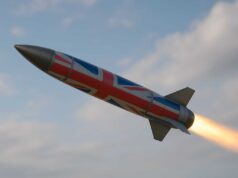
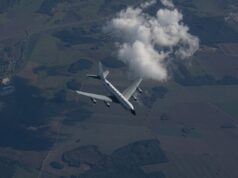


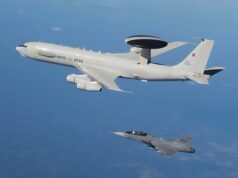
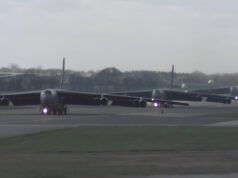

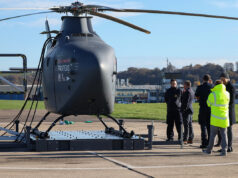
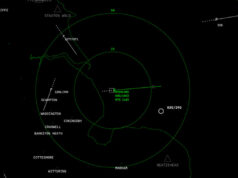
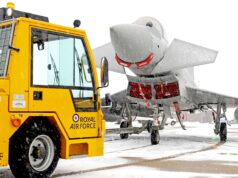

No sign of TTWCS for T26 then. A bit like Storm Shadow on F35, we presumably wait for Perseus…
To be fair, Tomahawk is nearing the end of it’s life and we don’t actually own any surface-launched versions. By the time Glasgow enters service in 2027(?), Tomahawks probably going to be out of service
The TLAM is going to be around for many more decades. There’s nothing that competes with the range, capabilities or payload of the TLAM block 4 now or in the foreseeable future. Everything else is much smaller, less capable and carries a smaller warhead.
“capabilities” being what? The primary advantages of Tomahawk are it’s aforementioned range and payload. Aside from that, its future use is pretty much limited to against soft targets or use in massive salvos from surface groups or SSGN. Russia, China, even Iran, all have massive air defence networks that old subsonic non-stealth weapons are incredibly vulnerable to.
Given that the only time the RN is likely to have several launch platforms in the same place is in a major conflict, spending money sustaining Tomahawk instead of investing in things like Perseus seems impractical.
Excellent news for Plymouth and as my son in law works for Babcocks….good news all round.
Anyone know much about the Fire shadow loitering munition? Look pretty good, it says range is only 60 miles but it can loiter for several hours above target area! So why not increase range with that!! I’m confused.
Not sure about total range with loitering, but it’s too light weight to be direct replacement for tomahawk
Hi Ulya. Fire Shadow was a tactical loitering munition for the Royal Artillery, and yes nothing to do with TLAM replacement. Storm Shadow is something else entirely.
Hello Daniele, thank you for that, Cam’s comment made me do some research, interesting missile
That’s what I thought very interesting, and saves an expensive jet loitering for hours.
Yeah it’s for small targets, would be ok if it could upscale.
Upscale might work Cam, but first 2 things I thought of would be cost of missile and how effective the opposite sides air defence are. Having a tomahawk size missile loitering for a few hours would be very hard to miss seeing
Vanished years ago Cam, along with every other attempt by the RA to modernise it’s munitions.
Ah right m8, shame, I suppose it’s cheaper to buy than to developer then buy at times.
Plenty of new sea launched missiles coming on line in the next decade. The TLAM is fine for low threat fights but for the truly high end peer fight it’s not going to work. The RN should start investing in what it’s going to want 10 years from now and let the TLAM wind down. Astutes and T26s with full load outs of hypersonic capable stealth missiles would be the nominal goal here IMO…
Cheers!
To be fair no one knows if they would make it through a modern air defence or not, since they have never need used against one.
All we know is we have a very limited stock and so no real need to stretch it across more platforms if it means existing ones would have less missiles available.
According to a few Russians on various defence sites, the combined UK/US/FR strikes against Syria were an almost total failure with a large number of tk/ss being jammed and shot down.
Could be rubbish but one of the guys does know what he’s talking about on defence matters
I thought Russian and Syrian air defences didn’t shoot any down! One side has to be right, but what one? ?
Embellishment on both sides as well as truth
The photo imagery on one of the Airbases that was targeted suggests differently.
As a direct comparison, you could view the attacks on Hamas, Iranian and Syrian forces around Damascus by Israel. The Israelis used a combination of air and ground launched weapons. Firstly to negate the air defences then target C&C, arms dumps and surface to surface rocket launchers. They repurposed a target drone as a ground attack weapon to take out a Pantsir SHORAD system. They have released the attack and it can be seen on YouTube. From the video it can be clearly seen that the Pantsir launches missiles at the drone, but electronic countermeasures by the Israelis confuse the missiles sending them wildly off course. Leaving the drone to take out the Pantsir system.
This attack shows that modern SAM defences aren’t impenetrable and can still be successfully attacked. What is interesting from the attack is that it wasn’t done from low level but a medium-ish level. This would make it easier by the SAM network to detect and give the defenders more time to react. It was always believed that to attack a Panstir, you had to approach at very low level and use surprise to your advantage.
The Tomahawk when attacking targets in Iraq had a 95% success rate against a highly layered defence network. The target approach is highly programmable to gain the maximum advantage of using terrain masking. Even by today’s standards, air defence networks will struggle to defend against a Tomahawk attack. The best defence against them is by a combination of AWACS and fighter aircraft. This gives you the maximum reach (time) to counteract them. Ground based air defences will always be hampered by local geography, unless they are networked with an AWACs style asset.
Iranian and Syrian air defences are not modern, they are semi modern.
The Panstir system is first class, most Western pilots have a serious amount of respect for the system. The Panstir is used by Russia as its primary short range air defence against very low targets and is usually teamed up with the S400 system.
Both Iran and Syria’s top missile system is either the S300 or a development of it. Iran has developed the Bavar and Talaash (with Chinese help). These two systems complement each other by being medium and long range and use multiple detection and tracking radars and are said to be networked together. Granted the system is not in the same league as the Russian S400, but they’re not far behind.
Russia have admitted that the Syrian S300 systems are networked to their S400 system. It didn’t stop the Tomahawks and Scalps/Storm shadows getting to their targets or perhaps politics came to play, who knows, but the missiles got through to their designated targets.
What we don’t know if Russia turned their systems on or not when the attack happened.
They clearly turned off their own main defences, but who knows if they let syria have access to their radars or not.
That’s exactly what they’re doing with Perseus FC/ASW, which will presumably have a submarine launched version as well.
To be picky though, we don’t want the T26 carrying a full load of hypersonic missiles; it’s an ASW platform, and ideally an ASROC-style weapon will be procured for them so they can actually perform that ASW mission full time.
Unfortunately though the fleet is so small that the T26 can be guaranteed to be pressed into service to do any task simply because a more suitable vessel isn’t available. Happens already with the Navy, for example in the Gulf we now have a top-end air defence destroyer providing escort for tankers against Iranian speed-boats.
Poor phrasing on my part. By “full time” I don’t mean the T26s will ONLY be deployed on ASW missions. With no torpedo tubes, their only current weapon against submarines is the helicopter, which can’t be used in every situation (poor weather, required maintenance, not enough time to get airborne, etc). ASROC would give the T26 the ability to attack submarines full time, 24/7.
Totally agree, for the T26 to be a dedicated ASW ship it has to have more than just a helicopter to persecute a submarine. It’s crazy to expect the helicopter to be 100% available all of the time regardless of weather etc.
https://news.usni.org/2019/08/01/iran-tanker-seizures-pushing-u-k-royal-navy-to-its-limits-as-new-pm-takes-charge
Cheers
Hi Callum, IMO, in a full scale fleet on fleet action peer war – even acknowledging that the RN would be conducting joint operations with the USN and others, restricting the land attack capability to a handful of Astutes (maybe 2-3 available at one time) would be a serious mistake. With the tiny size of the current RN ANYTHING that could deploy with, and fire off a missile should be equipped to do so.
The USN is already moving in that direction with the “Distributed Lethality” concept of “If it floats it fights”. Even our Amphibs and Military Sealift replenishment vessels are under consideration to be armed with vertical launch cells and box launchers. The San Antonio class LPDs already have space, electrical capacity, and cooling for MK41s.
Cheer!
I don’t think it’s possible to make a missile both hypersonic and stealth. Anything going through the air at M5 plus gets very very hot. IR sensors can detect that sort of missile easily.
Agree ATH, I was just referring to an optimal “Unicorn” goal here. Speed is is going to be the deciding factor in the effectiveness of a hypersonic weapon.
Cheers!
Have a look at plasma stealth. IR sensors aren’t great at long range anyway, and if you only detect a hypersonic missile at the last second, it will almost definitely hit you
There’s lots of hype about hypersonic missiles, interesting to see how good they will actually be against modern air defence.
Depending on how fast they are, they’ll flat out be beyond the capability of a lot of the most common missile defences. E.g. Sea Ceptor is only good against Mach 3, I believe ESSM is good up to Mach 5 (which is the low end for hypersonic).
Beyond just the capability of the actual defensive missiles is the reaction times: AD systems need to detect, identify, launch, defeat any jammers, and decoy/kill a missile in an engagement window that will probably last less than 30 seconds (especially if it’s seaskimming).
Yes and no. Its true SeaCeptor has a published max speed of just over Mach 3. However, most engagements against a hypersonic missile will not be tail chasing but more likely a frontal intercept. Therefore it’s a “simple” case of mathematics i.e. placing the SeaCeptor in front of the hypersonic missile and making sure the detonation timing is timed to take into account the closure speed. Much like the learning curve when developing THAAD, the anti-missile missile must detonate before the approaching missile to have any affect.
Related: https://www.nationaldefensemagazine.org/articles/2019/7/31/defense-department-reviewing-industrial-base-for-hypersonic-weapons
Cheers